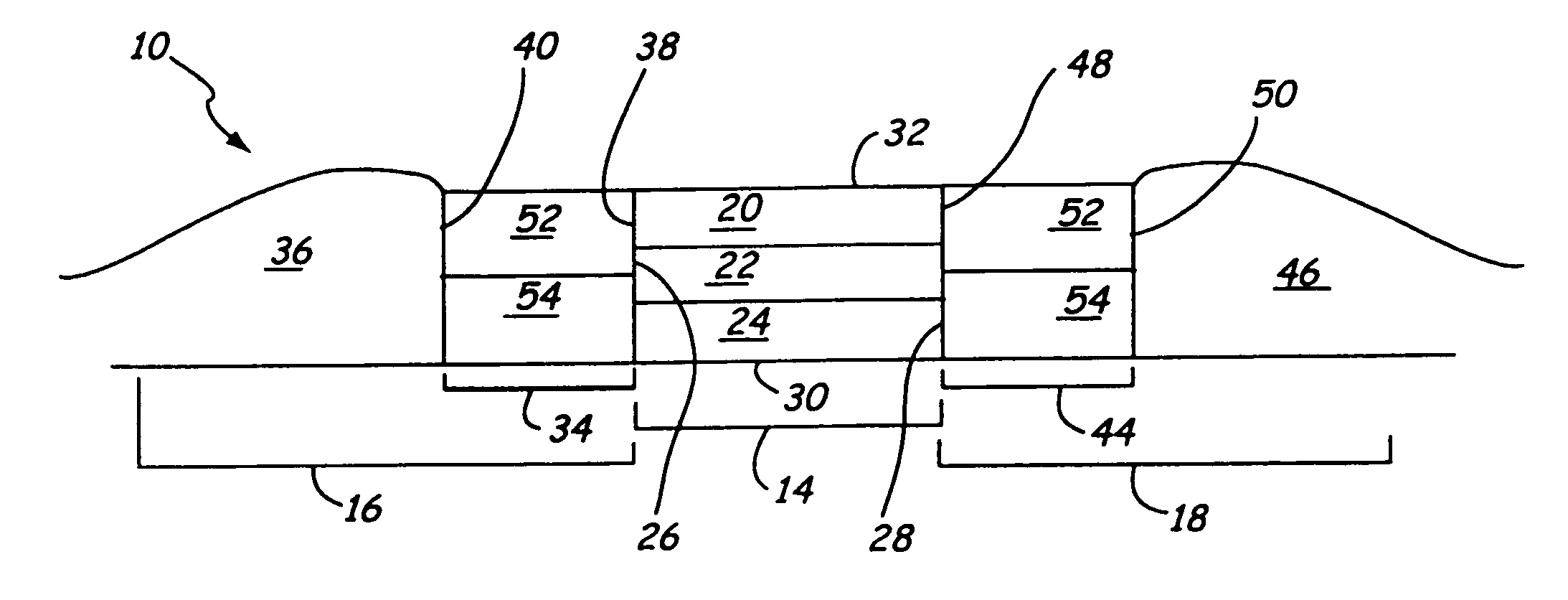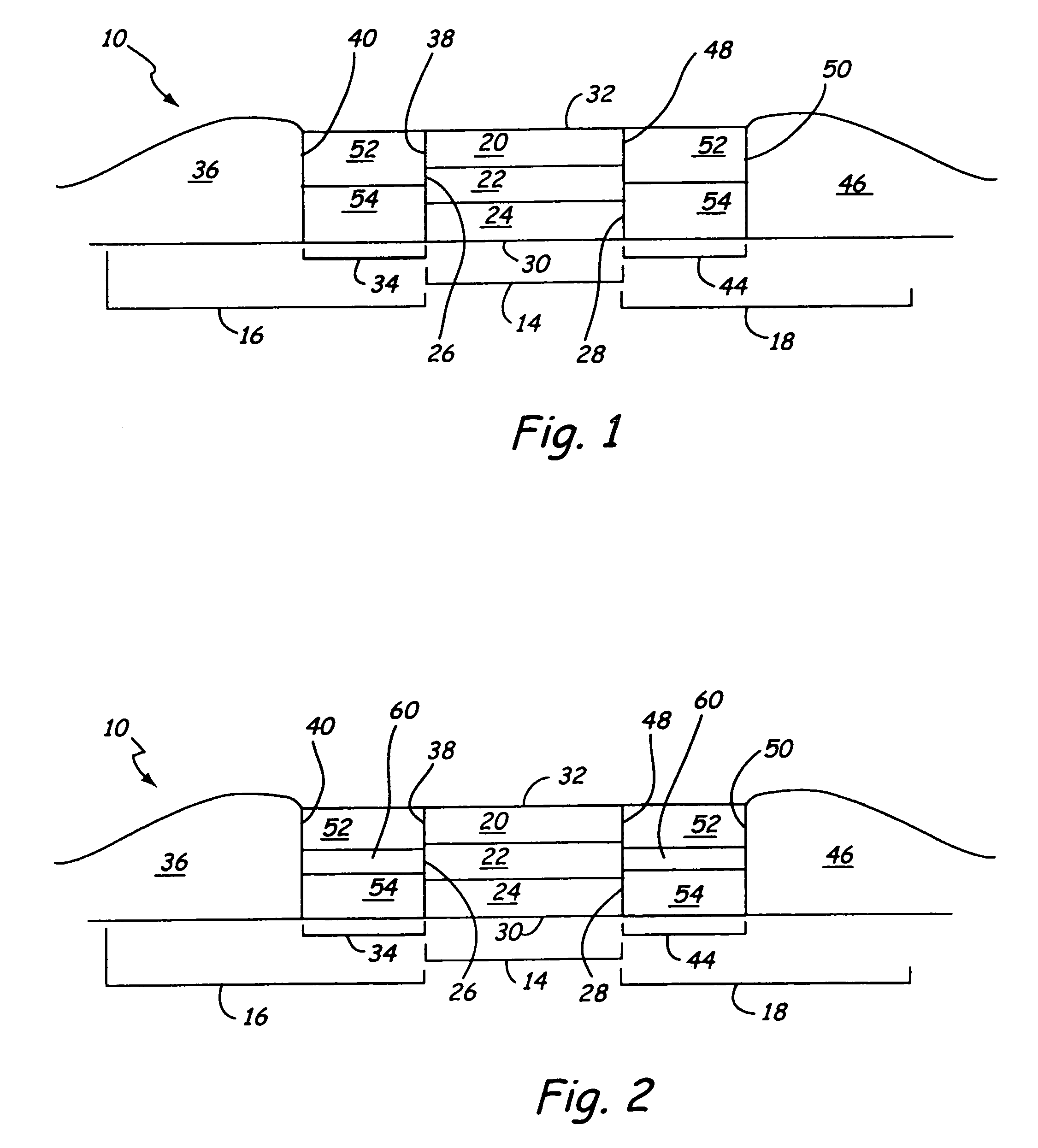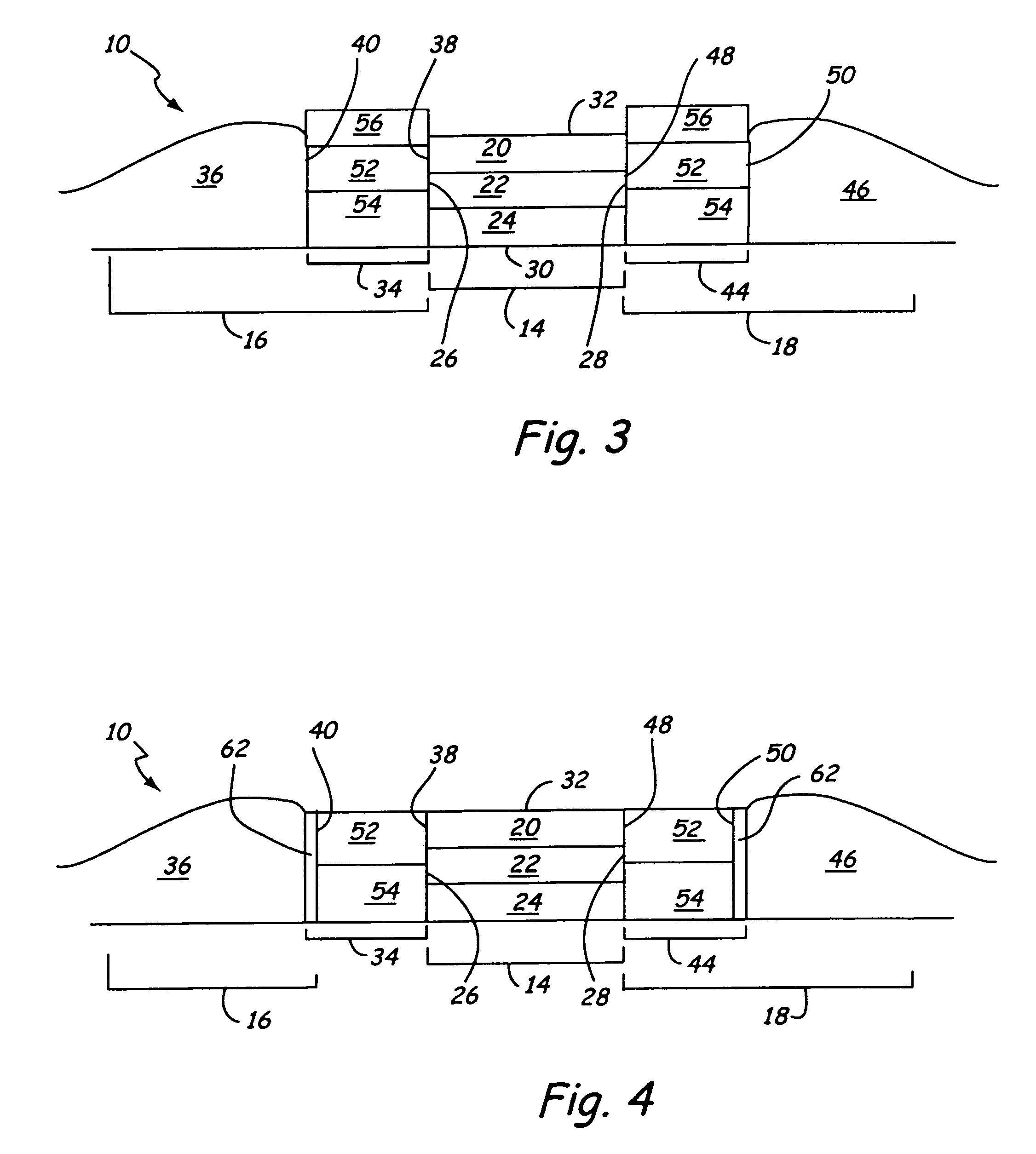Mag-tab design for biasing magnetic sensors
a magnetic sensor and magnetic field technology, applied in the field of magnetic sensor stabilization, can solve the problems of reducing sensor efficiency, reducing signal amplitude, data error, etc., and achieve the effect of reducing side-reading and signal amplitude penalties
- Summary
- Abstract
- Description
- Claims
- Application Information
AI Technical Summary
Benefits of technology
Problems solved by technology
Method used
Image
Examples
Embodiment Construction
[0019]The stabilization structure of the present invention may be used with various types of magnetic sensors, including but not limited to: MR, GMR and spin valve. An MR or GMR sensor 10 consistent with the present invention is shown in FIG. 1. The MR or GMR sensor 10 includes: a central region 14, a first biasing structure 16 and a second biasing structure 18. The MR or GMR sensor will also include the following additional structures which are not shown in FIG. 1: one or more contacts, and one or more shields (e.g. top and bottom shields) according to the specific sensor design.
[0020]The central region 14 of a MR or GMR sensor 10 is generally a multilayer structure wherein one or more layers are magnetically active and free to respond to changes in magnetic flux. This type of layer is commonly called a free layer or MR layer, and although referred to as a singular layer, the teachings of the present invention are also applicable to sensor designs incorporating multiple MR or GMR l...
PUM
 Login to View More
Login to View More Abstract
Description
Claims
Application Information
 Login to View More
Login to View More - R&D
- Intellectual Property
- Life Sciences
- Materials
- Tech Scout
- Unparalleled Data Quality
- Higher Quality Content
- 60% Fewer Hallucinations
Browse by: Latest US Patents, China's latest patents, Technical Efficacy Thesaurus, Application Domain, Technology Topic, Popular Technical Reports.
© 2025 PatSnap. All rights reserved.Legal|Privacy policy|Modern Slavery Act Transparency Statement|Sitemap|About US| Contact US: help@patsnap.com



